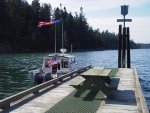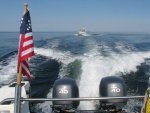Not so much a C-Dory question but general boating. On say a 25 foot single engine boat, what would be some differences of stern drive compared to OB regarding:
1. Steering, forward and reverse. General handling.
2. Steering effort. Stern drive is one finger light but how much effort does a typical hydraulic system require.
3. Noise.
4. General reliability and maintenance.
Many more differences of course, just looking for some real life experiences in the above areas.
Thanks,
Jake
1. Steering, forward and reverse. General handling.
2. Steering effort. Stern drive is one finger light but how much effort does a typical hydraulic system require.
3. Noise.
4. General reliability and maintenance.
Many more differences of course, just looking for some real life experiences in the above areas.
Thanks,
Jake


